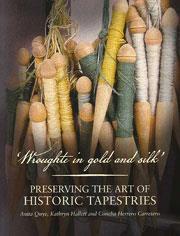Wrought in gold and silk. Preserving the art of historic tapestries
Wrought in gold and silk. Preserving the art of historic tapestries
Amita Quye, Kathryn Hallett and Concha Herrero Carretero
Edinburgh, UK: NMS Enterprises 2009 | 134pp | ?19.99 (SB)
ISBN 9781905267156
Reviewed by John Uttin

Although this book would not seem from its title to be of much interest to chemists, it describes the results of an interdisciplinary EU-funded project ’Monitoring of damage in historic tapestries’ (MODHT), which involved historic dye analysis by Alison Hulme and Hamish McNab at the chemistry department of University of Edinburgh, UK, and textile chemistry by Chris Carr and Marei Hacke at the University of Manchester, UK.
The tapestries chosen for study came from the UK Royal Collection at Hampton Court, the Spanish Royal Collections in Madrid, and several Belgian collections.
Samples of the silk and precious metal thread were taken from the backs of the tapestries and subjected to a battery of physicochemical tests to assess the composition of these materials and their deterioration.
HPLC was one of the main techniques used in the studies, supplemented with ATR-FTIR, SIMS and 3D fluorescence.
Protocols were developed and then applied to a particular case study at Hampton Court on three 17th century wool and silk English tapestries woven in London and Mortlake in Surrey.
Such studies, involving the application of chemistry to fine art, are vital to support and complement curatorial decisions for tapestry conservation.












No comments yet